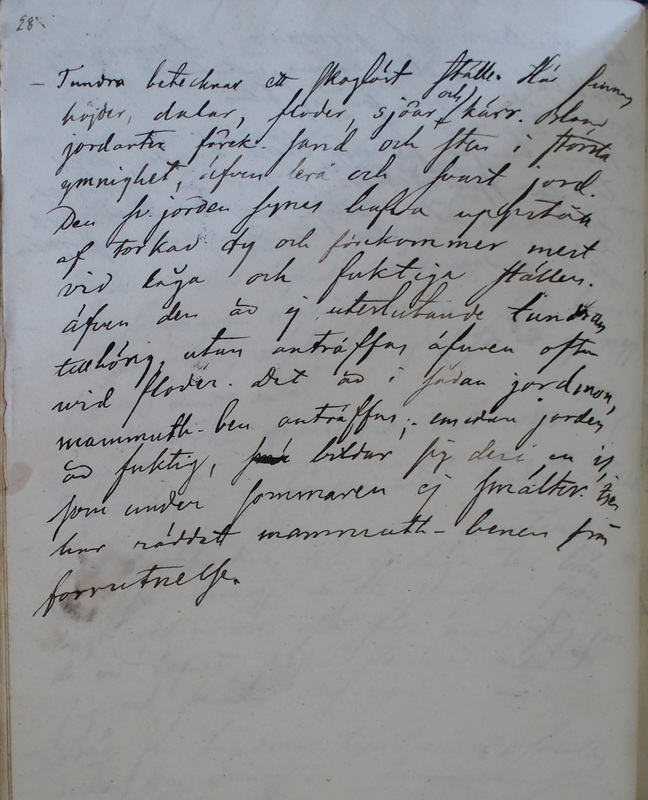Ethnographiska, historiska och statistiska anmärkningar. 028
Title
Ethnographiska, historiska och statistiska anmärkningar. 028
Description
| Tundra betecknar ett skoglöst ställe. Här finnas höjder, dalar, floder, sjöar och kärr. Bland jordarter förek[ommer]. land och sten i största ymnighet, äfven lera och svart jord. Den sv[arta]. jorden synes hafva uppstått af torkad dy och förekommer mest vid låga och fuktiga ställen. Äfven den är ej uteslutande tundran tillhörig, utan anträffas äfven ofta wid floder. Det är i sådan jord inom mammuth-ben anträffas; emedan jorden är fuktig, snö bildrar sig deri en is, som under sommaren ej smälter. Isen har räddat mammuth-benen
frånSee [Jengora].
förrutnelse. |
Tundra denotes a forestless place. There are heights, valleys, rivers, lakes, and marshes. Among soil types, there is a variety of land and stone categories; there is also clay and black earth. The black earth seems to have arisen from dried sludge and it occurs most frequently in low and humid places. It does not belong exclusively to the tundra, but is also often found by the rivers. It is in such soil that mammoth bones are found; because the earth is damp, snow forms ice in it, and the ice does not melt during the summer. The ice has saved the mammoth bones from decay. |

